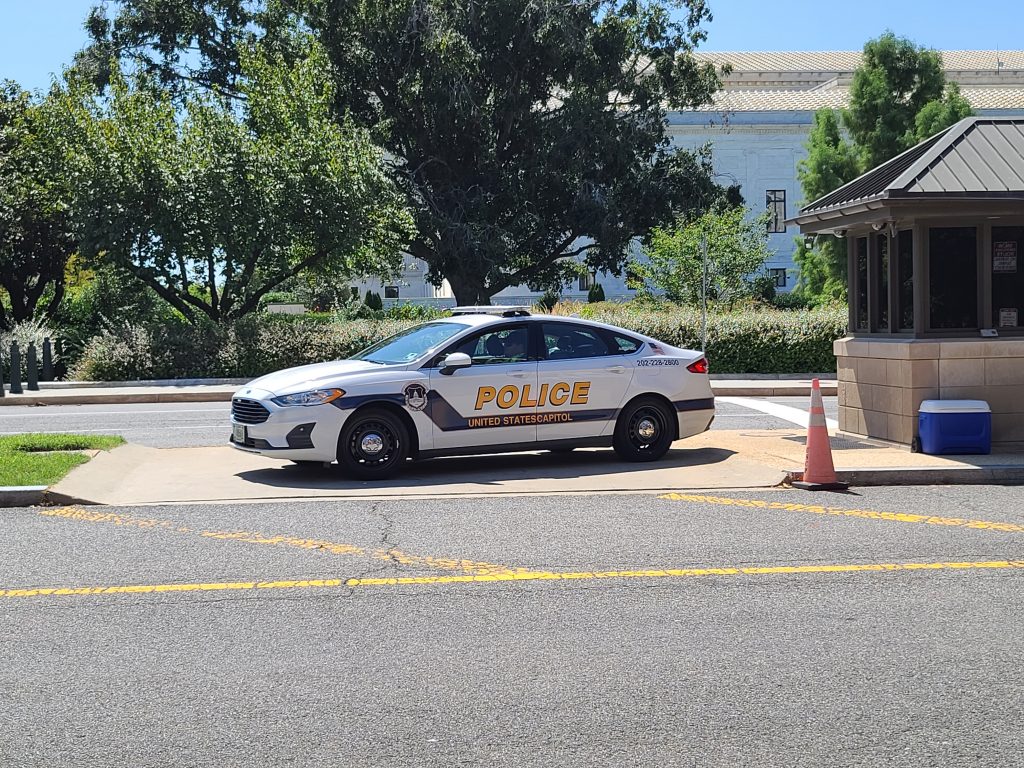House Democrats surprised everyone on Friday by passing an “assault weapons” ban. After saying they’d have to punt the vote to after the August recess, moderates caved at the last possible moment and the bill passed by the thinnest of margins.
However, with a likely-insurmountable uphill battle in the Senate ahead, the vote is unlikely to amount to anything more than a symbolic win House Democrats can use during the upcoming midterm elections. But will that strategy work? There are a lot of reasons to think it probably won’t and could instead work against them. I take a close look at those reasons.
Then Contributing Writer Jake Fogleman examines how the Supreme Court’s landmark decision in New York State Rifle & Pistol Association v. Bruen is playing out in criminal court. We have a new case that suggests it will become increasingly hard to successfully prosecute people under gun-control laws called into question by the ruling. Jake explains what it could mean moving forward.
Plus, Duke Law’s Andrew Willinger talks about the long-term fallout from the Bruen decision on the podcast.

Analysis: The Politics of the House AR-15 Ban [Member Exclusive]
By Stephen Gutowski
The House passed an “assault weapons” ban on Friday in what’s likely to amount to little more than a messaging effort for the midterm elections. But is that message actually going to help those who voted for it?
On the surface, polling indicates this move is a wash at best. The latest Quinnipiac University poll shows support for banning assault weapons has dropped below 50 percent. Gallup puts it a bit higher at 55 percent.
Morning Consult is still showing support over 60 percent. But, like the other polls, it shows no substantial boost in support for the policy following the Uvalde massacre. In fact, all three pollsters have found support for the ban down from its 2019 highs even in the days immediately after the horrific attack.
That makes the ban an outlier among gun-control policies, which saw a spike in support after the shooting. In fact, Gallup found it was the least popular gun-control proposal of the half dozen they asked about–by a whopping 20 points.
Still, it’s clear Democrats are attempting to break the coming red wave in the midterms by rallying their base with wedge issues. Gun control is one of the critical aspects of that push.
There’s some polling that shows where the party got the idea that could work. Quinnipiac’s most recent poll found a plurality of Democrats listed gun violence as the most urgent issue facing America. It also reported 87 percent of Democrats support an assault weapons ban.
Of course, Democrats haven’t actually gotten a ban through. They’ve passed it through the House, yes. But it’s very unlikely to make it through the Senate and into law.
In fact, it probably won’t even get a vote in the Senate. The companion bill there has just 37 cosponsors. Politics is fluid (it seemed unlikely the House would pass the ban just a week or two ago), and more mass shootings involving the guns in question could push the Senate to take up a vote. However, Democrats would be hard-pressed to get more than 40 or 45 yes votes out of the 60 required.
Half-delivering on a longtime priority may not end up being much of a boon at all, even for the activists paying close attention. And it’s not entirely clear how much delivering for gun-control activists matters in getting millions of dollars from them anyway. In much the same way nation-level Republicans still enjoy overwhelming support from gun-rights groups for doing little more than not passing new gun-control laws, Democrats benefit the same way from the polarization of the issue.
After all, where else are the gun-control groups going to go at this point? Only two Republicans voted for this ban. And only one of them, Rep. Brian Fitzpatrick (Pa.), is running for reelection. The other, Rep. Chris Jacobs (N.Y.), has been forced into retirement over his support for the bill.
And once you get past gun-control activists, the appeal of this move becomes even more questionable.
The same Quinnipiac poll that found Democrats overwhelmingly support an assault weapons ban, showed Republicans and Independents oppose the policy. The same survey that IDed gun violence as the most urgent issue, everyone else IDed inflation as the most urgent issue. And they did so by vast margins of over 30 points.
The most recent YouGov poll found 84 percent of respondents rated guns either somewhat or very important. But only four percent said it was the most important issue. That lands guns in a four-way tie for 9th place. Inflation, which 22 percent said was their most important issue, topped the list.
The bipartisan gun bill further complicates the political messaging for Democrats. While several of the polls mentioned above found increased support for stricter gun laws, the gun bill President Joe Biden signed in June could not have happened without Republican support. It undercuts the message that Republicans are holding up gun legislation and may prove to be enough for many Americans who were in the “do something” camp.
Of course, polling isn’t everything in gun policy. It’s instructive to look at the real-world performance of gun-control initiatives as well. Back in 2016, the far-more popular policy of universal background checks was put to a vote in Nevada and Maine.
Despite support for that policy commonly polling in the high 80s or low 90s, both votes wildly underperformed. In Nevada, the initiative did pass but only with 50.45 percent of the vote. In Maine, it failed with just 48.2 percent of the vote.
With assault weapons bans generally polling 30 to 40 points lower than universal background checks, it’s hard to see how the ban helps rather than hurts Democrats even well beyond battleground districts. And history gives instruction on this point. As even some Democrats have noted, the last time they backed a ban like this it hurt the party.
“This is a bill that destroyed the Democrats in ’94. I guess, do we really have a death wish list as Democrats?” Rep. Kurt Schrader (D., Ore.) told Politico. “It undermines what we already did and reemphasizes to all the people in America that are not hardcore urban Democrats that our party’s out of touch.”
Things have certainly changed since the last assault weapons ban. However, one of the things that has changed is the popularity of the guns Democrats are seeking to ban.
Assault weapons is a nebulous term that varies from proposal to proposal. In this case, it applies to semi-automatic centerfire rifles capable of accepting detachable magazines and equipped with one or more banned features, including flash suppressors, barrel shrouds, or pistol grips. But the guns squarely in the sights of this ban are the popular AR-15 and AK-47.
Those guns have enjoyed an incredible resurgence since the previous ban expired in 2004.
More than 24.4 million ARs and AKs have been bought by Americans, according to the National Shooting Sports Foundation. More civilians than ever own these guns, and the AR-15 is the most popular rifle in the country. To give some context, the number ARs and AKs alone are equivalent to about 24 times the number of all guns owned by all of American law enforcement, according to the Small Arms Survey. American-civilian-owned ARs number more than the small arms stockpile of the entire world’s police forces combined.
With upwards of tens of millions of Americans now owning the guns House Democrats just voted to ban, it seems more likely the vote could motivate their opposition better than it could activate their supporters. Instead of countering a toxic political environment for Democrats created by a floundering economy, a symbolic vote to ban popular guns may increase it. With much of the table for the midterms already set, it could be difficult to judge the impact of the vote either way.
We’ll certainly be watching closely for signs of its influence on key races.
Podcast: Duke Law’s Andrew Willinger on Bruen’s Fallout [Member Early Access]
By Stephen Gutowski
This week we’re bringing in a fresh perspective on the Supreme Court’s landmark decisions in New York State Rifle & Pistol Association v. Bruen.
I’ve talked with National Review’s Charles Cooke and Cam Edwards of Bearing Arms about the case and its likely fallout on previous episodes of the podcast. It’s only sensible to try and get another credible voice who looks at the situation from a different point of view.
Andrew Willinger, the new executive director of Duke University’s Center for Firearms Law, was gracious enough to fill that role. He gave his interpretation of what the court ruled in Bruen as well as its likely impact on Second Amendment cases moving forward.
He argued the new text and tradition test leaves a lot of room for interpretation. He predicted there would be a lot of growing pains as the lower courts try to feel out how exactly to proceed with gun cases. Still, he said many modern gun regulations are at greater risk of being found unconstitutional under the Bruen standard.
Plus, Contributing Editor Paul Crookston and I talk about the “assault weapons” ban just passed by the House.
You can listen to the show on your favorite podcasting app starting Monday. Members can listen to it on Sunday either by clicking here or watching the private video of the show on our YouTube channel.

Analysis: Criminal Justice Applications of Bruen Begin to Take Shape [Member Exclusive]
By Jake Fogleman
Months before the Supreme Court ever handed down its landmark ruling in New York State Rifle and Pistol Association (NYSRPA) v. Bruen, criminal defense attorneys made the case for striking down New York’s restrictive gun-carry law on criminal justice reform grounds.
“New York’s licensing requirements criminalize the exercise of the fundamental Second Amendment right, with rare exception,” the Black Attorneys of Legal Aid and two New York City public defender services wrote in an amicus brief. “As a result, each year, we represent hundreds of indigent people whom New York criminally charges for exercising their right to keep and bear arms. For our clients, New York’s licensing regime renders the Second Amendment a legal fiction.”
Now that the Court has ruled and a fundamental right to bear arms in public has been firmly established, the real-world implications of the decision on the criminal justice system are starting to take shape. On Wednesday, a Superior Court judge in Sacramento County, California, threw out a case against a defendant charged with carrying a handgun without a license.
“Bruen unequivocally holds that public carry is presumptively legal,” Judge Steve White wrote in his ruling. “At the time of defendant’s arrest, California provided one legal means by which an individual could exercise their right to public carry-to get a license under section 26150. That path was unconstitutional.”
Citing another Supreme Court decision, Shuttlesworth v. City of Birmingham, Ala, Judge White said he had no choice but to dismiss the charges.
“According to Shuttlesworth, faced with an unconstitutional restriction on his constitutional right, defendant was free to engage ‘with impunity in the exercise of the right…’” he wrote. “The Court does not relish the conclusion reached here and understands its ramifications. But this result cannot be avoided in light of Bruen and Shuttlesworth and the arguments presented by the parties.”
It’s a ruling that could have enormous implications for defendants charged under various gun-control laws. It sets a clear example for defense attorneys to challenge charges and convictions secured in a pre-Bruen landscape. The most obvious of which will be for charges filed against persons for carrying without a permit in jurisdictions that simply refused to grant them in the past.
Additionally, because the Second Amendment test laid out in Bruen calls many other gun control laws into question, the same rationale could soon apply to other restrictions as they get struck down in the coming months and years.
To be clear, such a decision is not a guarantee that every judge will be persuaded by the same reasoning. Indeed the New York Times reports that several Bronx public defenders have tried to make similar arguments on behalf of their clients charged under New York’s strict gun-carry law, but to no avail.
Likewise, carrying without a permit in states with objective, shall-issue licensing standards is still likely to wind up with criminal charges that stick. The Supreme Court in Bruen held that licensing requirements were not per se unconstitutional, provided that the law granted licenses on an objective basis.
However, many of the states that have had to reformulate their laws in light of Bruen have chosen to include several subjective provisions that could prove to be unconstitutional as well. And that’s where the argument could have more success. That includes New York’s new law, which features a dubious “good moral character” requirement and an expansive definition of “sensitive places” where gun carry is a felony offense even with a permit.
Massachusetts’ carry law likewise retains a vague “suitability” standard that also seems ripe for a challenge. California, which has not yet officially replaced its carry law containing provisions ruled unconstitutional in Bruen, could also see more instances of charges being dropped in cases where carrying without a permit was the only relevant offense allegedly being committed.
With a successful result achieved in Sacramento, expect to see such arguments become increasingly common from defense attorneys across the country on behalf of clients charged with possessory offenses. While we only have one instance of success to this point, the defense that a particular gun-control law is unconstitutional in light of Bruen and thus unenforceable is one that’s likely to be used often in the near future.
It is also one that will likely require higher court guidance to fully flesh out. Judge White hinted at this fact in his ruling.
“Bruen does not define law-abiding or give any guidance on how lower courts should determine whether a weapon is carried for self-defense or for some other purpose,” he said. “The People also decline to offer a definition of these ambiguous terms, and the Legislature has not yet addressed these questions.”
He wrote out a list of key questions that still need to be answered.
“Do the criminal allegations themselves mean someone is not law-abiding?” White said. “Does carrying a concealed firearm while possibly engaged in uncharged criminal conduct mean someone is no longer law-abiding? Does a prior conviction of any kind mean someone is no longer law-abiding? What if the prior conviction is stale? How does a court determine whether a firearm in a waistband is possessed for self-defense or not? Is a firearm locked in a safe possessed for self-defense or some other purpose?”
White said he defaulted to the side of the defendants in the interim.
“Denying someone’s constitutional right by teasing through nebulous questions like these is not the Court’s role,” he wrote.
Until higher courts develop a cohesive approach or state legislatures come into closer compliance with Bruen, expect to see challenges like this continue at the trial court level.
That’s it for now.
I’ll talk to you all again soon.
Thanks,
Stephen Gutowski
Founder
The Reload







